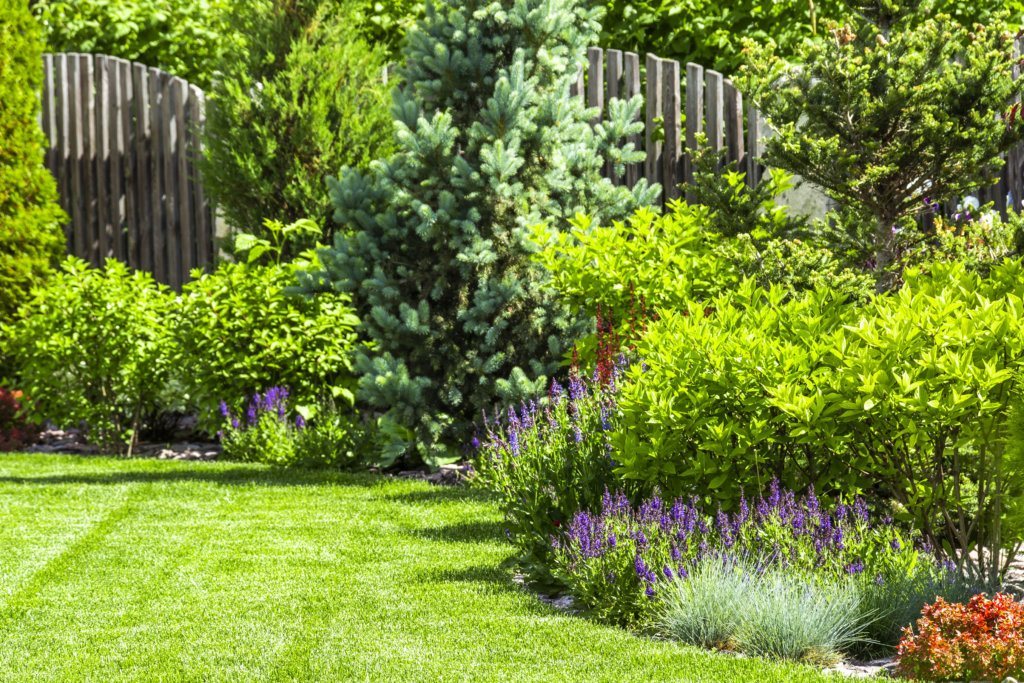
Just saw my first “fifty percent off trees and shrubs” sign at a local nursery. That makes it official: We are now in the smart money zone of landscaping!
Like car dealers, garden centers and nurseries need to move out the old stock to make room for the new — in the case of garden centers, that new stock is cut Christmas trees and giant inflatable Homer Simpson Santa Clauses.
And these end-of-season deals on high-quality trees and shrubs are good for you and for the nursery; you save money immediately (on a plant that’s a year bigger than it was in the spring!) and they save money long-term. Most independent garden centers close down for a while after the holidays and don’t want the extra expense of caring for unsold trees and shrubs over the winter.
And, like we always say — fall is a better time to plant than spring.
Just don’t plant like other people!
It may not be popping on your radar, but this is the perfect time of year to install new trees and shrubs. Garden centers and nurseries are slashing prices, and survival rates are higher now than for plantings in the spring — as long as you plant correctly!
That means removing all wrappings from balled and burlaped trees (no burlap in the hole — period!) and removing enough soil at the top of potted trees to expose the root flare. (Potted trees and shrubs are often sold a bit too low in the soil.)
Pick an area where the new plants will not be exposed to any chemical herbicides, especially those (foolishly) used for lawn care. These chemicals are designed to kill anything that’s not grass.
- Dig a wide hole; not a deep one.
- Place shrubs at the same height or slightly higher than they were in the pot.
- Place trees high enough in the hole that you can see the root flare above If the tree looks like a lollipop, it is planted too deeply. Take it back out and put more soil in the bottom of the hole. It may defy common sense, but trees with exposed roots are much less likely to fall over in a storm than lollipops.
- Forget everything you’ve heard about ‘improving the soil’ in the planting hole. Always fill the hole back up with the same crappy soil you dug up, so the roots have no choice but to grow out into the surrounding soil.
(If you make the oft-recommended nice little planting island of peat moss, potting soil, Cheerios and love, the roots will stay in that nice little area, girdle the tree and the tree will die.)
- If you must mulch (and no — you don’t have to!), start 6 inches away from the plant and go out several feet — but no deeper than 1 or 2 inches. Anyone who says different is just trying to sell you more mulch — and maybe a new tree down the line.
- Immediately water deeply and slowly by letting a hose drip at the base of each newly-installed plant for several hours. Repeat weekly if a long dry spell strikes.
No watering with ‘gator bags’; they promote rot, disease, and insect and vermin attack by keeping the trunk covered and moist.
Money-wise spring bulb buying time is here
It is not yet time to plant new Spring bulbs in the ground (wait until just after Halloween), but it is the perfect time to purchase them. Nurseries and garden centers are anxious to get that shelf space for Christmas decorations, and most are offering deep discounts on their remaining stock.
But buy wisely. If you are tormented by Dastardly Deer, Voracious Voles and Sinister Squirrels, stick with bad-tasting (or just plain toxic to eat) bulbs like daffodils, hyacinth, fritillaria and ornamental alliums. (That listing is also a rough gauge of the sequence of their bloom time.)
Daffodils are especially pest-proof; and if they are on steep sale, buy lots. A cluster of a hundred blooming daffodils is a better cure for the month of March than Prozac!
Ah, but if tasty tulips and crocus you crave, be aware that they are eminently edible. To try and deter Evil Squirrels and Voracious Voles from eating the underground bulbs, start collecting and saving dog hair to use as a vermin-suppressing mulch at planting time.
Spreading dog hair on a freshly planted bed is your best shot at actually seeing some tulips in the Spring.
Feed the birds — but with suet, not seed
Yes, some birds are migrating away for the winter, but many will stay — and that stay-at-home group is heavy on our best avian insect eaters, like the chickadee, nuthatch, titmouse and a wide range of woodpeckers.
Do not attract these garden helpers with seed feeders. Those feeders attract and nurture the Evil Squirrels that will eat your tulip bulbs and then break into your attic to perform noisy copulation. And the spilled seed attracts deer and mice — THE prime carriers of ticks that transmit Lyme and other dread diseases.
Instead, go mad with bird baths; clean water is often hard for wild birds to find. Even better — get a heated bird bath and provide fresh water all winter; the birds will sing their thanks to you.
And hang lots and lots of suet feeders. Suet cakes provide the high-energy protein-rich food that carnivorous birds like the chickadee crave; and those birds will happily nest near that perfect food source. Take down the feeders in the spring and your feathered friends will not fly away; they live there now! Instead, they will naturally switch over to eating your landscape pests.







